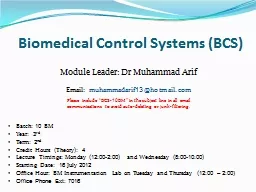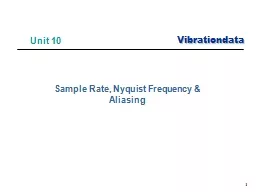PPT-Nyquist and Shannon Capacity
Author : ellena-manuel | Published Date : 2018-12-07
1 A very important consideration in data communications is how fast we can send data in bits per second over a channel Data rate depends on three factors 1 The bandwidth
Presentation Embed Code
Download Presentation
Download Presentation The PPT/PDF document "Nyquist and Shannon Capacity" is the property of its rightful owner. Permission is granted to download and print the materials on this website for personal, non-commercial use only, and to display it on your personal computer provided you do not modify the materials and that you retain all copyright notices contained in the materials. By downloading content from our website, you accept the terms of this agreement.
Nyquist and Shannon Capacity: Transcript
Download Rules Of Document
"Nyquist and Shannon Capacity"The content belongs to its owner. You may download and print it for personal use, without modification, and keep all copyright notices. By downloading, you agree to these terms.
Related Documents














